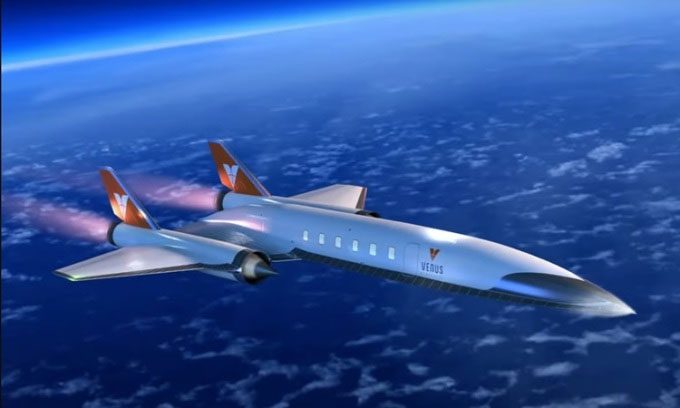The integrated detonation rocket engine of Venus Aerospace can propel aircraft to speeds exceeding 7,400 km/h.
The company Venus Aerospace has unveiled a groundbreaking engine designed for high-speed aviation. The Venus Detonation Ramjet 2000 lb (VDR2) was recently launched at the Up.Summit event, according to Interesting Engineering. This development marks a significant milestone in hypersonic flight technology, with the potential to transform air travel by enabling airlines to cover vast distances at incredible speeds. The new engine will make hypersonic flight a reality, according to Andrew Duggleby, the Chief Technology Officer of Venus Aerospace.

Simulation of an aircraft equipped with the VDR2 engine. (Photo: Venus Aerospace).
A key challenge in achieving hypersonic flight is creating an engine that can maintain continuous thrust at extreme speeds. Current hypersonic systems mostly rely on gliders, which are launched to high altitudes and speeds using rockets before gliding back to the ground. While effective, this method is impractical for commercial airlines that need to maintain powered flight throughout the journey.
The VDR2 addresses this challenge with a simple design based on a ramjet engine. This type of jet engine utilizes the forward motion of the aircraft to compress incoming air, eliminating the need for complex and fragile components like traditional jet engines. Venus Aerospace enhances the traditional ramjet design by integrating a rotating detonation rocket engine (RDRE) into the VDR2.
This technology boosts both thrust and efficiency through a continuous detonation process. During this process, fuel and oxidizer are pumped into a narrow gap between two cylinders and ignited, creating a rotating supersonic shock wave within the gap. This method generates significantly more thrust compared to conventional combustion methods.
Additionally, the combination of the ramjet engine and RDRE technology provides an engine that is not only powerful but also durable. It can propel aircraft to speeds of Mach 6 (7,408 km/h) and reach altitudes of 52,000 meters. Furthermore, Venus Aerospace predicts that the VDR2 will be over 15% more efficient than traditional engines, making it even more suitable for commercial use.
The first test flight of the VDR2 is scheduled for next year. If everything goes according to plan, the project could have a substantial impact on the future of hypersonic aircraft and has the potential to revolutionize the entire aviation industry.




















































